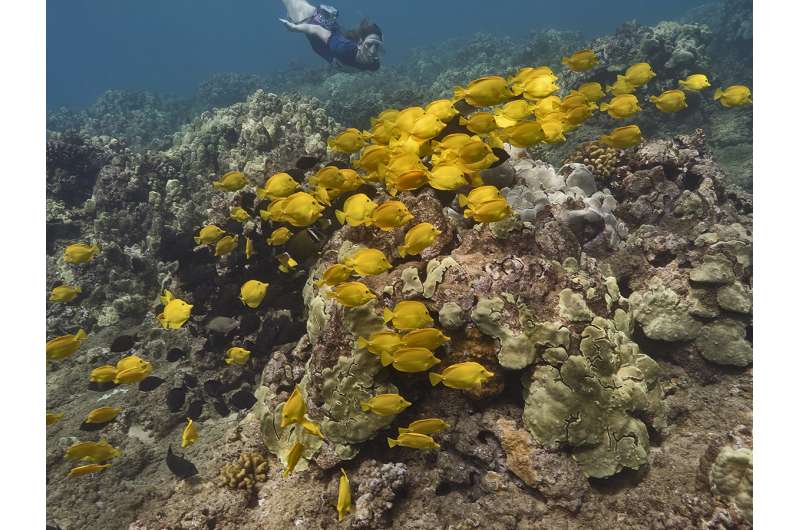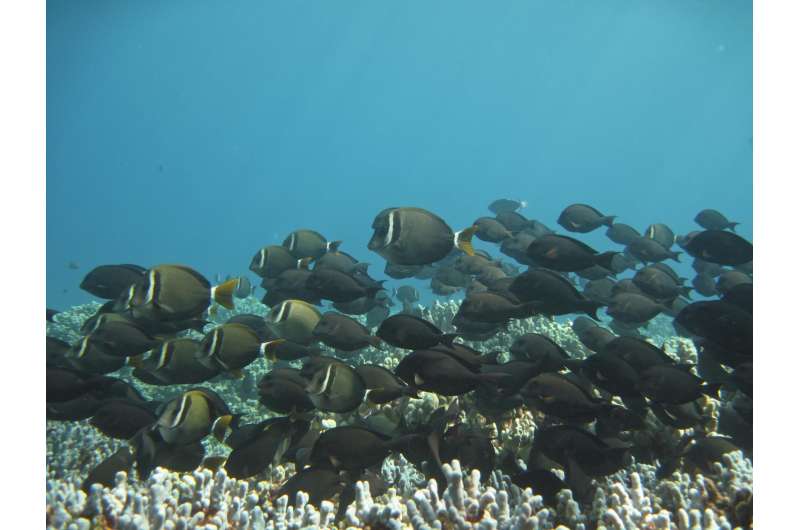Emily Kelly is studying reef fish at the Kahekili Herbivore Management Area in Hawaii. Credit: Don McLeish.
Grazing on algae is a full-time job for a highly specialized group of coral reef fish.
In a new study, a Scripps Institution of Oceanography at the University of California San Diego-led research team examined the unique grazing roles of algae-eating herbivores on coral reefs to learn more about how they help keep corals from being overgrown by seaweeds.
To find out, Scripps marine ecologist Emily Kelly and her research team recorded the feeding behaviors of 15 of the most common species of algae-eating fish, such as parrotfish and surgeonfish on a coral reef in Maui, Hawaii. The study, conducted over a four-year period, compared these observations to the stomach contents of several of the fish species as well as the habitat in which different fish were grazing.
Kelly's team discovered that despite large-scale similarities across all species in the consumption of "turf algae," a group of algae comprised of a number of different species, a finer scale analysis revealed that individual species are actually selectively grazing on different types of algae and in different ways.
"These 'lawnmowers' on the reef are selective in the types of algae they consume and the impact of each bite," said Kelly, lead author of the study and a postdoctoral scholar in the Scripps Coral Reef Ecology Lab. "These fish are in fact each a different type of gardening tool with a slightly different function in grazing."
A school of herbivorous fish at Kahekili Herbivore Fisheries Management Area in Hawaii. Credit: Emily Kelly
A diverse community of herbivores is necessary to promote healthy reefs, and by understanding their algae-eating behaviors, this study can help better manage and protect coral reefs worldwide, according to the researchers.
"Understanding the role of individual fish species is important for knowing how the herbivore community as a whole can influence reef composition and reef health," said Kelly.
Schools of herbivorous fish are shown at Kahekili Herbivore Fisheries Management Area in Hawaii. Credit: Emily Kelly/Scripps
Provided by University of California - San Diego























